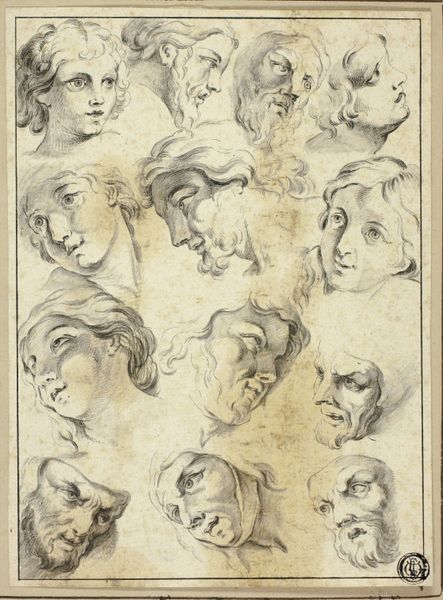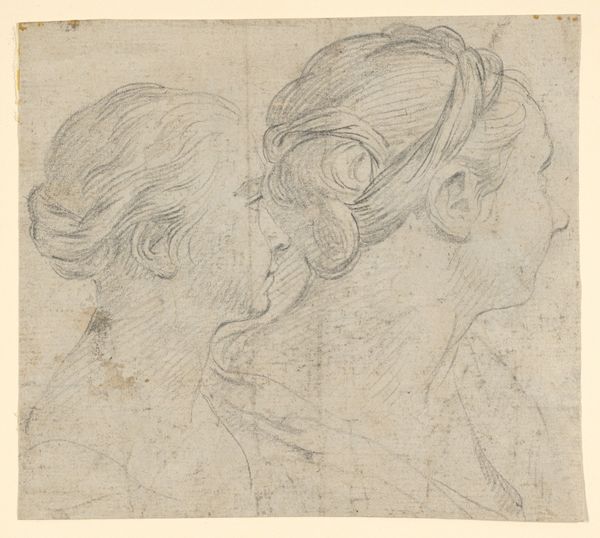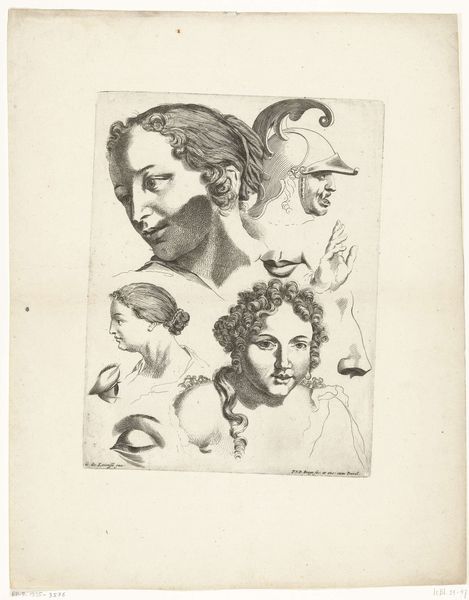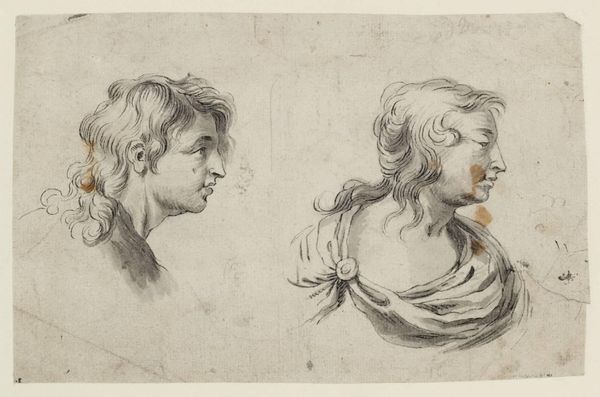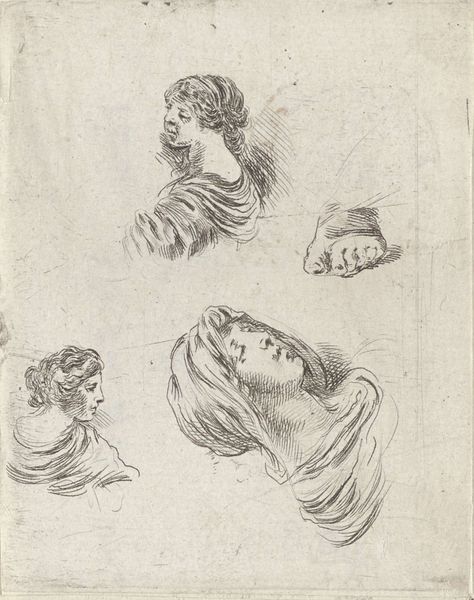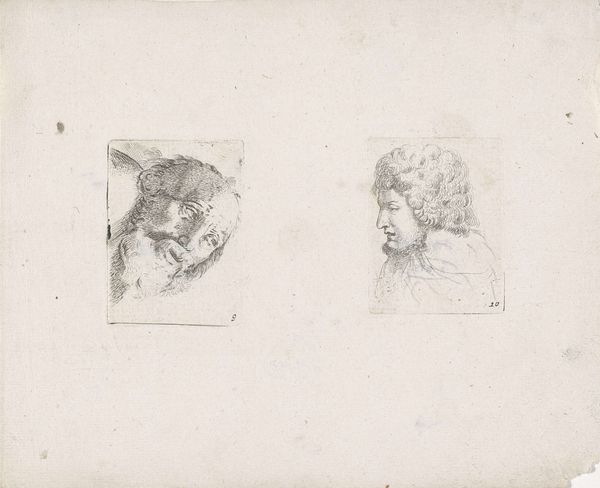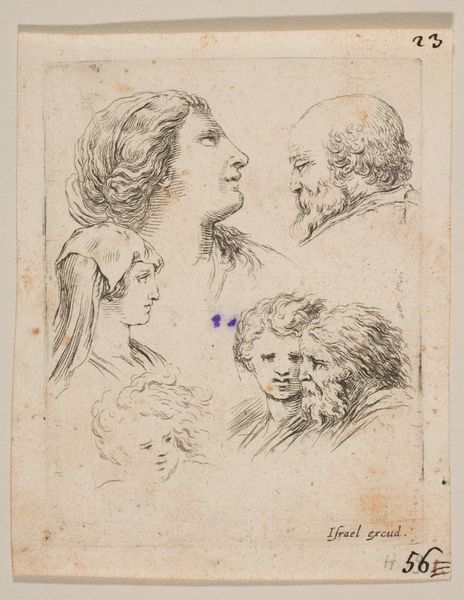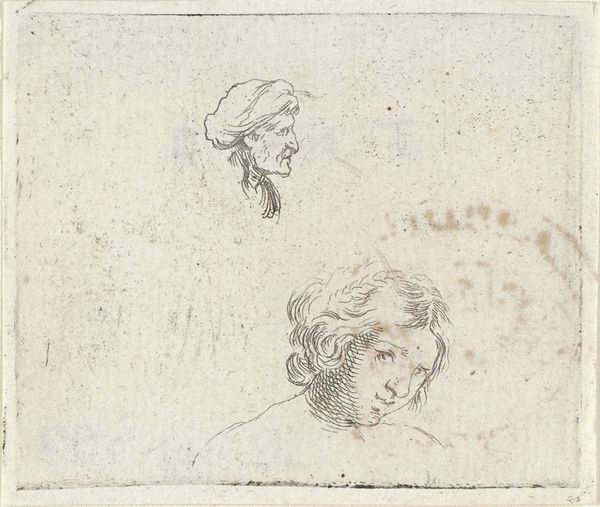
drawing, paper, pencil, chalk
#
portrait
#
drawing
#
figuration
#
paper
#
11_renaissance
#
pencil
#
chalk
#
history-painting
Dimensions: 208 × 143 mm
Copyright: Public Domain
Curator: Welcome! We're standing before a drawing from the late 16th century, titled "Sketches of Three Male Heads in Profile," created by an anonymous artist. It’s rendered with pencil and chalk on paper, and it resides here at the Art Institute of Chicago. Editor: Immediately striking, isn't it? There's a density to the repeated profiles, almost like a repressed anxiety is radiating from these clustered faces. Curator: Absolutely. Look closely at the paper. You can almost trace the evolution of the sketches. The tooth of the paper, how it grabs and holds the chalk, is especially revealing. There's evidence of reworking, adjustments; a palpable sense of the artist’s hand in the making of these images. One can consider this drawing in the context of workshop practices of the Renaissance period, possibly used to train assistants. Editor: And I see the classical Roman bust! The severe expressions and tightly cropped view suggests that this relates to earlier Roman traditions of verism, concerned with the detailed realistic representation of individuals, almost like death masks. Curator: Precisely, although somewhat stylized for its time. Now, given the use of readily available materials such as chalk and paper, could we consider how the economic accessibility of this media potentially democratized portraiture? Were such sketches common means to reproduce powerful visages on demand? Editor: An intriguing idea. And there’s the shadow play around the mouth and jawline. It gives the impression of these men whispering some untold secrets—a heavy emphasis on profile underscores a hidden element, as in early cameos depicting political or military figures, only shown partially for specific purposes, or to deliver unspoken social meanings to insiders. Curator: Good point. There is something secretive about the arrangement, isn't there? It provokes questions about power and visual culture of the time. Editor: This image embodies those elusive boundaries. What does the choice of this material imply regarding patronage? Was the drawing displayed as a symbol of status like oil-paint portraits? Curator: Food for thought, indeed! Examining the piece this way gives an indication about modes of artistic creation from the past, including labor. It allows for a fresh viewpoint on this rather striking visual arrangement. Editor: I concur; it invites endless reflection regarding symbol-making and its meaning for those who experienced its appearance, back when those who understood portraiture in profile meant a lot more than they do today!
Comments
No comments
Be the first to comment and join the conversation on the ultimate creative platform.
